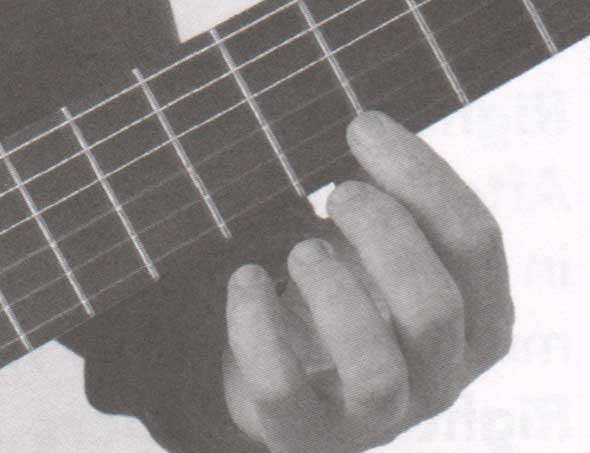
Harmonics
Harmonics, the beautiful bell-like tones often heard in guitar music, can be produced by either of two methods.
Natural Harmonics
Natural harmonics occur at nodal points along the length of each string, primarily at the 12th fret (half-length), 7th fret (one-third length) and 5th fret (one-quarter length). Another important harmonic point occurs at the 4th and 9th frets (as the same note), and this duplication happens for most harmonics on each string. These notes are demonstrated on the table below along with the seldom used 3rd fret harmonic. Harmonics are usually notated as a diamond-shaped note, and indicated as Harm, or Arm. , followed by a Roman Numeral for position or fret.


Locating Natural Harmonics
To play a natural harmonic, in this case the first string, 12th fret E, lightly lay the fourth finger (straightened as shown in photo A) on the string, directly above the 12th fret. Pluck ! as normal, but immediately after plucking, lift the finger to allow the string to vibrate freely. Try the same above the first string, 5th fret (using the first finger as shown in photo B) and you will notice that it produces an E note two octaves higher than the open string (the 12th fret is the E note one octave higher than the open string). This is the same for all six strings.
It is advisable, when playing natural harmonics, to pluck close to the bridge (where no harmonic points occur) as opposed to over the sound hole (where several harmonic points occur) as it will nullify the desired harmonic if you pluck where a natural harmonic point is situated. Natural harmonics are most often written an octave below the actual pitch.
Table of Natural Harmonics

Demonstrating Natural Harmonics

